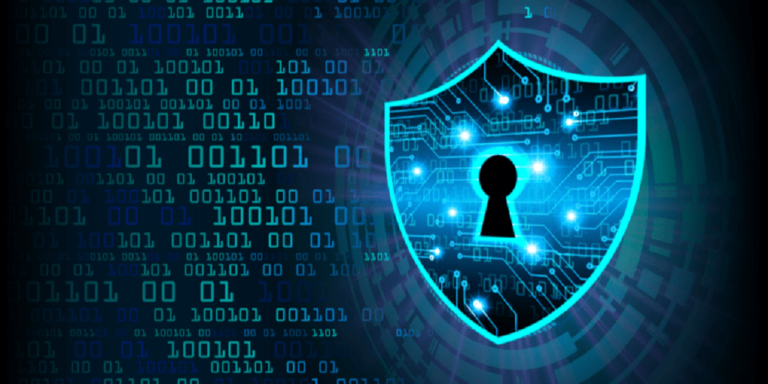AI for Cybersecurity : Benefits and Risks
FANTASI21 – Cybersecurity threats are advancing quickly, as cybercriminals use sophisticated methods to infiltrate systems and steal sensitive information. Conventional security approaches frequently struggle to keep pace with these evolving dangers, making the use of AI technologies essential. AI’s capability to handle and assess vast amounts of data presents new ways to strengthen security. However, it’s important to recognize both the advantages and potential risks of AI in cybersecurity to ensure the implementation of effective and well-balanced security strategies.
Benefits of AI in Cybersecurity

Enhanced Threat Detection
One of the most significant advantages of AI in cybersecurity is its ability to enhance threat detection. AI systems can analyze vast amounts of data in real-time, identifying patterns and anomalies that might indicate potential threats. Machine learning algorithms, especially those utilizing supervised and unsupervised learning techniques, excel at recognizing unusual behavior or deviations from normal patterns. This capability allows organizations to detect emerging threats and vulnerabilities more effectively than traditional methods.For example, AI-powered intrusion detection systems can monitor network traffic and detect unusual activities that may signal a cyber attack. By recognizing these anomalies early, organizations can take preventive measures before the threats materialize into actual breaches.
Automated Response Mechanisms
AI-driven cybersecurity solutions can automate response mechanisms, significantly reducing the time required to address security incidents. Automated responses can handle repetitive and time-consuming tasks, such as isolating infected systems, blocking malicious IP addresses, and applying patches or updates. This automation not only improves response times but also frees up cybersecurity professionals to focus on more complex and strategic issues.Automated response systems can also operate continuously, ensuring that threats are addressed promptly without human intervention. This round-the-clock vigilance is crucial for maintaining security in today’s always-on digital environment.
Predictive Analytics
AI’s predictive capabilities offer a proactive approach to cybersecurity. By analyzing historical data and identifying trends, AI systems can forecast potential vulnerabilities and attack vectors. Predictive analytics enable organizations to anticipate and prepare for possible threats before they occur. This forward-thinking approach helps in strengthening defenses and minimizing the risk of successful attacks.For instance, AI can analyze past cyber incidents to identify common attack patterns and predict future threats. By understanding these patterns, organizations can implement targeted security measures to address potential vulnerabilities.
Reduced False Positives
Traditional security systems often generate a high volume of false positives, overwhelming IT teams and leading to alert fatigue. AI improves accuracy in threat detection by reducing the number of false alerts. Advanced AI algorithms can differentiate between benign activities and genuine threats with greater precision, allowing security teams to focus on real issues.This reduction in false positives enhances the efficiency of cybersecurity operations and ensures that critical alerts are prioritized and addressed promptly.
Continuous Learning and Adaptation
AI systems are designed to learn and adapt continuously. As cyber threats evolve, AI algorithms can update their detection methods and responses based on new data. This dynamic learning process helps AI systems stay ahead of emerging threats and maintain effective protection over time.Continuous learning ensures that AI systems remain effective in identifying and mitigating new types of cyber threats, making them a valuable asset in a rapidly changing threat landscape.
Risks of AI in Cybersecurity

Complexity and Cost
Implementing AI in cybersecurity involves significant complexity and cost. AI systems require substantial investments in technology, infrastructure, and expertise. The development, deployment, and maintenance of AI-driven solutions demand specialized skills and resources, which can be a challenge for many organizations, particularly smaller ones with limited budgets.The complexity of AI systems also means that they require ongoing management and fine-tuning to ensure optimal performance. This can add to the overall cost and complexity of maintaining an effective cybersecurity strategy.
Dependence on Quality Data
AI systems rely heavily on the quality and quantity of data they are trained on. Inaccurate, incomplete, or biased data can lead to suboptimal performance and ineffective threat detection. Ensuring the integrity and comprehensiveness of data is crucial for the success of AI in cybersecurity.Organizations must invest in high-quality data collection and management practices to ensure that AI systems are trained on relevant and accurate information. Failure to do so can result in AI systems that are unable to effectively identify or respond to cyber threats.
Adversarial Attacks
Cybercriminals can exploit AI systems through adversarial attacks designed to deceive or manipulate AI algorithms. For example, attackers may use techniques such as adversarial machine learning to introduce misleading data or manipulate the AI’s decision-making process.These adversarial attacks can undermine the effectiveness of AI-driven security solutions, making it essential for organizations to implement safeguards and continuously monitor AI systems for signs of manipulation.
Ethical and Privacy Concerns
The use of AI in cybersecurity raises important ethical and privacy considerations. AI systems often require access to sensitive data, raising concerns about how this data is handled and protected. Ensuring compliance with privacy regulations and maintaining ethical standards is crucial to preserving trust and safeguarding personal information.Organizations must implement robust data protection measures and ensure that AI systems are designed and used in a manner that respects privacy and ethical guidelines.
Over-Reliance on Automation
While AI can automate many aspects of cybersecurity, an over-reliance on automated systems can be risky. Human oversight remains essential for interpreting AI-generated insights, making informed decisions, and handling complex scenarios that AI may not fully understand.It is important for organizations to strike a balance between automation and human expertise, ensuring that AI systems complement rather than replace human judgment in cybersecurity efforts.
AI has the potential to revolutionize cybersecurity by offering enhanced threat detection, automated response mechanisms, predictive analytics, and continuous learning. These benefits make AI a valuable tool for improving an organization’s security posture and staying ahead of evolving cyber threats.
However, the implementation of AI in cybersecurity is not without its challenges. Complexity, cost, dependence on data quality, adversarial attacks, and ethical concerns are significant risks that must be managed. Organizations must carefully evaluate these factors and adopt a balanced approach that integrates AI effectively while maintaining human oversight and ethical standards.
By understanding both the advantages and potential dangers of AI in cybersecurity, organizations can develop robust and resilient security strategies that leverage the power of AI while addressing its associated risks. In a rapidly changing digital world, staying informed and proactive is key to achieving comprehensive and effective cybersecurity.




